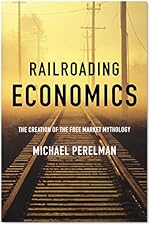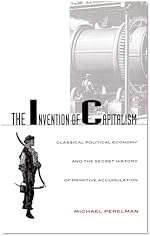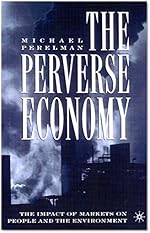The Purported Queen of the Social Sciences
Economics has long prided itself as a science, modeled after physics. From time to time, the glaring differences between economics and physics become embarrassingly apparent. I was just reading a review by Herb Gintis that reminded me of another comparison between the two disciplines which described a meeting between physicists and economists.
Gintis’s review recalls his experience reading two graduate texts, one on quantum mechanics and another on economics.
Pool, Robert. 1989. “Strange Bedfellows.” Science, vol. 245 (18 August): pp. 700-5.
701: Physicists at the Santa Fe institute were amazed at how mathematically sophisticated economists were.
701: The economists were shocked at the physicists’ lack of rigor. Because physicists have so much data, they can follow their noses or use computer simulations. Because economists’ data is so sparse, they must carefully lay out their assumptions.
701: The economists thought that science meant mathematical proofs of theories and econometric tests. The physicists spend most of their time trying to explain phenomenon, such as agricultural economists and economic historians.
Gintis, Herbert. 2006. “Review of Eric D. Beinhocker. The Origin of Wealth: Evolution, Complexity, and the Radical Remaking of Economics (Boston, MA: Harvard Business School Press).” Journal of Economic Literature, 44: 4 (December): pp. 1018-31.
1027: “… in the summer of 2001, … I happened to be reading a popular graduate text in quantum physics, as well as a leading graduate text in microeconomics. The physics text began with the anomaly of black body radiation which was inexplicable using the standard tools of electromagnetic theory. In 1900, Max Planck derived a formula that fit the data perfectly, assuming that radiation was discrete rather than continuous. In 1905, Albert Einstein explained another anomaly of classical electromagnetic theory, the photoelectric effect, using Planck’s trick. The text continued, page after page, with new anomalies (Compton scattering, the spectral lines of elements of low atomic number, etc.) and new, partially successful models explaining the anomalies. This culminated in about 1925 with Heisenberg’s wave mechanics and Schroedinger’s equation, which fully unified the field.”
1027: “By contrast, the graduate microeconomics text, despite its brilliance, did not contain a single fact in the whole thousand page volume (actually, there were two references to facts, both in footnotes). Rather, the authors build economic theory in axiomatic fashion, making assumptions on the basis of intuitive plausibility or consonance with the principles of “rational action”.”

 25 – The Confiscation of American Prosperity: From Right-Wing Extremism and Economic Ideology to the Next Great Depression
25 – The Confiscation of American Prosperity: From Right-Wing Extremism and Economic Ideology to the Next Great Depression 30 – Manufacturing Discontent: The Trap of Individualism in Corporate Society
30 – Manufacturing Discontent: The Trap of Individualism in Corporate Society Class Warfare in the Information Age
Class Warfare in the Information Age Railroading Economics: The Creation of the Free Market Mythology
Railroading Economics: The Creation of the Free Market Mythology Steal This Idea: Intellectual Property Rights and the Corporate Confiscation of Creativity
Steal This Idea: Intellectual Property Rights and the Corporate Confiscation of Creativity The Invention of Capitalism: Classical Political Economy and the Secret History of Primitive Accumulation
The Invention of Capitalism: Classical Political Economy and the Secret History of Primitive Accumulation The Perverse Economy: The Impact of Markets on People and the Environment
The Perverse Economy: The Impact of Markets on People and the Environment
As an ex-chemist with an interest in economics I always get irritated by economics-physics comparisons. “Why physics?” I want to ask.
The fact that they want to leap right past geology, biology, chemistry, materials science and so on to physics is, to me, a giveaway that mathematical sophistication is the goal rather than scientific method. Your quotes confirm my view.
But if money is intrinsically valueless and attains value only as buyer and seller agree that this bit of pretty paper is worth that can of beans, then why should Economics bother with those pesky things: facts.
The only thing a fact is good for is to wreck a beautiful theory (after Huxley).
–ml